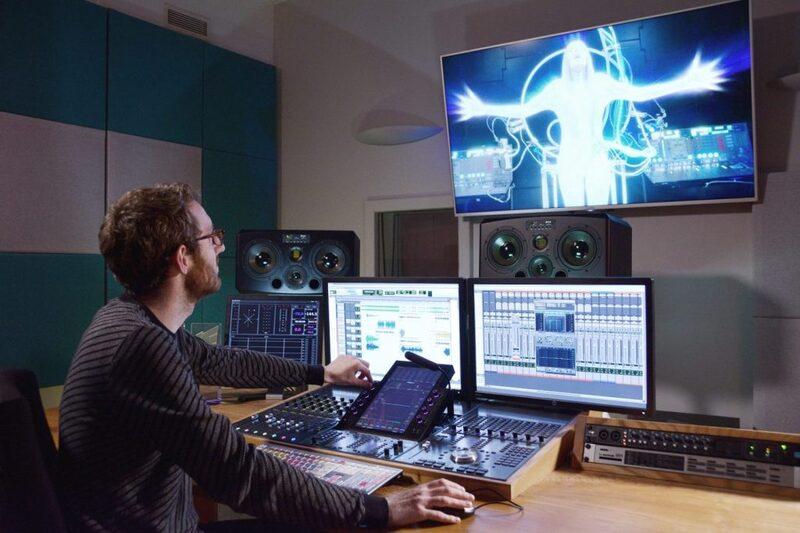
Surely you've heard of post-production when filming or taking photos. Post-production is the final stage to bring out the perfect finished products. To find out exactly the question: "What is post-production?" Let's find out with Viewfinder Media!
1. What is post-production?
First, let's learn about what post-production is. Post-production is the final stage in production before going public. The post-production process of a movie is also considered the second filming because it can change the mind of the film through post-production.
What is post-production?
After filming, post-production will perform tasks related to reviewing and editing footage such as selecting scenes, cutting raw footage, editing footage, processing sound effects, and dubbing to create and turn it into the next connection.
>>>> CLICK HERE: Compare the difference between viral clip and TVC ads
2. What is the importance of post-production?
Is post-production really necessary, what is the effect of actual post-production? Post-production contributes to the overall story of the film, which is extremely important:
- The stage of "changing souls" makes the scene interesting and attractive.
- Clarify and emphasize the message you want to reach your audience.
Post-production is an important step
Similar to a house that relies on paint colors to become more attractive, photos and videos also need post-production to be properly edited and attract viewers. Therefore, the post-production of images and movies cannot be ignored.
>>>> DON'T MISS OUT: Indispensable professional filming equipment
3. How many parts does the post-production process include?
Post-production is the process of processing raw video into finished movies with special effects. Here are 8 basic steps to answer the question of what is the post-production process:
- Step 1 - Editing: Editing is like the command center in post-production. First, the raw footage is transferred to the editing system where the editor begins to cut scenes under the director's guidance.
- Step 2 - Sound Editing: Gather all the audio tracks of the movie, remove the noise, and create sound effects. When the sound on set is not up to standard, actors will go to the studio to record the dialogue in sequence.
- Step 3 - Music: If you want music in the scene, you need to ensure recording and publishing rights. Music changes the mood of a video or movie, adding depth, texture, emotion, and story completion.
- Step 4 - Peeling: When all the audio tracks are finished editing, the audio coupler will make the audio level adjustment. If the sound is too loud, it can impress the actor's voice, or if the sound is too low, it will affect the viewing experience.
- Step 5 - Visual effects, add VFX (Visual Effects): Create or add visual effects such as creating illusions using green screens, 3D, 4D, and 5D effects...
Chèn hiệu ứng vào video
- Step 6 - Color grading and grading: Color grading and grading can be done before or after the VFX step, but after the variable is more common. Color correction helps to solve all color problems such as white balance, exposure...
- Step 7 - Graphics: Graphics are added to help the viewer see the message. It can be a piece of text or a complete active story.
- Step 8 - Trailer: The intro is the first intro to impress and engage the audience.
4. How long does post-production take?
It's not filming but post-production that takes the longest time in the production process, often several months. Post-production time is not fixed but also depends on each project. So what are the factors that affect the post-production? Post-production needs to turn a raw video into a complete and seamless movie, so depending on the difficulty of the project, the length of the video, the post-production stages also have different execution times.
- The more difficult the project, requiring a high rate of care, the longer the post-production period will be compared to simple projects.
- The longer the video, the longer the post-production and vice versa.
Real-time change the change by project
5. What are the important notes when building post-production?
Post-production is an extremely important step, it determines the outcome of the output video. Therefore, to be able to produce a complete and attractive video, what are the notes to know in post-production:
5.1. RAW shooting
RAW is an image and video format taken directly from the camera without any editing. Shooting RAW is always the most basic thing and is preferred by most family photos because when shooting in RAW format, the resulting water images will be realistic and sharp.
RAW images for sharper details
>>>> LOOKING FOR MORE: What is an Executive Producer? 7 skills required for this position
5.2. Standard screen color
One of the very important notes that cannot be ignored when doing post-production is to correct the screen for the most accurate color. To edit the standard screen color, you can refer to some of the following ways:
- Choose a mode that is less affected by the ASUS visual ancillary feature sRGB. If this is not available, leave the screen in Custom/User Mode.
- In contrast, Brightness is equal at 70 or 80, RGB is 50-50-50, color temperature is 6500K, Gamma is 1.8 and Sharpness is 50.
- Turn off features such as power saving, Dynamic Contrast, Black Equalizer…
Adjust the standard color screen to avoid errors
5.3. White balance
Most cameras can automatically white balance quite well, but in some exceptional cases, the machine is still capable of false recognition. Therefore, it is recommended that you calibrate the white balance correctly before shooting. White balance will help edit without color deviation or wrong tone.
The difference in white balance
5.4. Set camera profile when using lightroom
Same video but looks always better on the camera than on the computer then chances are you forgot to set the camera's color processing profile when processing RAW images. The default installed Lightroom software that handles general RAW files handles an Adobe Standard color profile with colors that have a light, full-color display. In post-production, you can apply camera profiles to RAW images by going to the Develop section, selecting Camera calibration, and changing from Adobe Standard to camera configuration options.
Use profile camera
6. What skills do you need to become a post-production expert?
Everyone wants to be an expert in their field. However, this job is not easy and needs to be drawn from a lot of experience. Here we will share some tips on what to become a post-production expert for your reference:
- Before starting, map out a specific path so that the work process is not interrupted.
- Use proficient, professional tools.
- Learn about the principles of color distribution in design.
- Have creative thinking, flexibility, and breakthrough ideas.
- Financial investment.
The secret to becoming a post-production expert
The above article has answered your question about what is post-production. Hope that Viewfinder Media's sharing has contributed in some way to help you better understand and improve your video post-production skills. Thank you for taking the time to read!
>>>> RELATED TOPIC: What is frame rate? Meaning and parameters of frame rate
Founded in 2008, we specialize in producing TV shows, ad videos, TV commercials, and other types of content. We have continuously improved our services to become one of the top production houses in Vietnam. We offer our clients the perfect service and deliver the most effective creativity.
